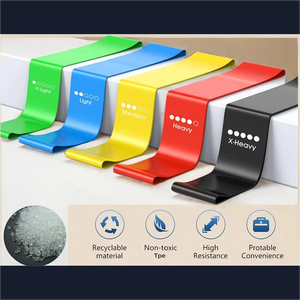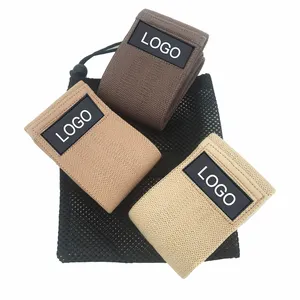(55664 products available)
























































































































































































































A rubber loop is a versatile tool for many daily applications. It is also known as a tension strap or stretch cord. The rubber loop is made from industrial-strength rubber. Depending on the application, the loops can be in different shapes and sizes. They come in standard sizes or can be customized to meet specific needs. Rubber loops can be used indoors and outdoors and offer a wide range of uses.
The rubber loop has many applications in the automotive industry, home improvement, construction, packaging, shipping, and logistics. They are useful for holding items in place, securing loads, fastening objects, and controlling motion. Here are some common types of rubber loops:
Rubber loops have many applications because of their versatility and flexibility. Here are some of the common application scenarios:
When buying rubber loops in bulk, it is important for business owners to consider the features that will help them know they are getting quality products. Below are some of the features they should pay attention to:
Durability
This is probably the most important feature that buyers should look for when buying a rubber loop. The quality of the rubber determines the lifespan of the loop. Get products that are made with premium rubber and avoid those that have visible signs of deterioration or damage. Durable rubber loops will withstand repeated use without breaking or losing elasticity.
Size and compatibility
Rubber loops come in different styles and sizes. Therefore, buyers should ensure they get the right size for their use. For instance, those intending to use the rubber loop for heavy-duty tasks should get larger and thicker loops. Conversely, those intending to use the loop for light-duty tasks should get smaller and thinner loops. Also, business owners should consider what equipment the customer will use with the rubber loop to ensure it fits properly.
Strength and elasticity
It is also important to get a rubber loop with good elasticity. Such a loop will have a longer lifespan because it can handle repeated stretching without breaking. Additionally, the rubber loop should have enough strength to support the intended load without failing.
Resistance to environmental factors
Many people use rubber loops in outdoor settings. Therefore, it is essential to get one that can withstand environmental factors such as ozone, UV light, and extreme temperatures. Exposure to these factors can cause fast deterioration of the rubber. A rubber loop that is resistant to environmental factors will last longer and perform consistently.
Type and application
As mentioned earlier, rubber loops come in different types for various uses. For instance, some are designed for specific uses, such as medical, automotive, or industrial applications. Therefore, buyers should get the right type of rubber loop for their application. Also, they should be aware that some rubber loops are custom-made to meet specific use requirements.
One of the main functions of a rubber lanyard is to attach and hold objects. The lanyards provide a reliable grip on the items they hold. They are excellent for securing items so they do not fall off or get lost.
Another function of a rubber loop is to absorb shock. The rubber material has elasticity, which enables the lanyards to absorb shocks. This helps prevent damage to the objects being held.
Rubber loops also help with convenience and ease of use. Many come with adjustable sizes, making it easy to fit different objects. The wide range of sizes and designs available makes rubber loops suitable for holding numerous items.
Durability
One major feature of rubber lanyards is durability. The loops are made from high-quality rubber that can withstand wear and tear. They do not easily break or get damaged.
Flexibility
Another feature of rubber loops is flexibility. The lanyards can stretch without losing their shape. This allows the loops to accommodate different sizes and shapes.
Resistance
Rubber bands are generally resistant to harsh environments. For instance, some rubber bands are waterproof and can withstand extreme temperatures. In addition, they do not get affected by chemicals or UV rays.
Simplicity
The simple design of a rubber loop makes the lanyard easy to use. The lanyards are lightweight and compact, which makes them convenient for carrying around.
Grip-enhancing elements
Many rubber loops come with grip-enhancing elements. The elements include textured surfaces or ridges that provide a secure grip on the objects.
Adjustable diameter
Some rubber loops have an adjustable diameter. They come with a sliding mechanism that allows users to adjust the size of the loop easily.
Q1: What is the benefit of using a TPE loop over a rubber loop?
A1: While rubber loops offer several advantages, TPE loops have their own benefits. TPE, like latex, is a highly flexible and elastic material. However, TPE is not as sensitive to temperature changes as latex. A TPE loop will not become brittle when the temperature is low. TPE is also skin-safe and does not cause allergic reactions like latex does. The main advantage of TPE over rubber is that it can be manufactured in bright colors. TPE is also odorless, unlike rubber.
Q2: Can the tension in a rubber tension loop be adjusted?
A2: Yes, the tension in a rubber band loop can be adjusted. Tension loops are installed on various equipment, such as bicycles, gates, and fences. When the rubber tension loop is installed, it is important to note that the tension is set once. The tension can be adjusted directly at the loop or indirectly through an adjustment mechanism.
Q3: What are some ways to prevent rubber loops from degrading?
A3: Rubber loops degrade due to exposure to UV light, heat, and ozone. Rubber loop manufacturers usually treat the rubber to minimize the effects of these environmental factors. To prevent the rubber from degrading, use it in the intended environment. If the rubber loop will not be exposed to UV light, heat, or ozone, it is best to store it in a dark, cool place. It is also important to use the rubber loop within the temperature range specified by the manufacturer.
Q4: What causes a rubber loop to snap?
A4: A rubber loop can snap due to overstretching. When a rubber band is stretched beyond its limit, it will deform permanently. Using excess force can also cause internal damage to the rubber loop, leading to snapping. Excessive heat also causes rubber to snap. When exposed to high temperatures, the rubber loop can lose its elasticity.